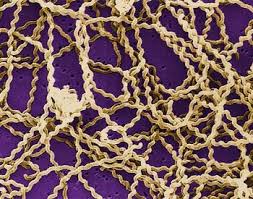DYNAMICS OF DYNAMICS OF TRANSMISSION AND LEPTOSPIROSIS RESISTANCE FACTORS IN THE SUBSTANCE OF CENGKARENG DISTRICT
![download (5).jpg]
(https://steemitimages.com/DQmWRATQ76jrJqq9Ta2NUThsFkVC7ws1gFFxiLKjwpHdrg7/download%20(5).jpg) OF PALMERAH AND GROGOL DESCRIPTION OF PROVINCE DKI JAKARTA
Hohoho ... if you read the title it feels very steady yaaaa ... = D
Just want to share it ...
This is the duty that I made for the last semester for Environmental Health and Sanitation class UNsyiah Post Graduate Program in Environmental Management (MPL). We were assigned to make research proposal related to animal-related diseases ...
After a long search, search, and search the material on the internet even to the medical library to find journals to get the theme of the proposal and the name of the disease that 'pleases' in the heart. More precisely to ensure the theme is not the kind of disease that is hard to find literature ... hahahaha ....
Finally the choice saia fell on Leptospirosis disease .. What is leptospirosis and some things about the disease whose name looks cool, can be read in the following postings:

Background
Leptospirosis is a zoonotic disease caused by leptospira bacteria and is spread throughout the world especially in tropical countries with high humidity levels. Based on the mode of transmission of leptospirosis is a direct zoonosis because it does not require a vector, can also be classified as amphetsenous because the transmission can take place from animals to humans or vice versa (Herawati, et al, 2005). The animals that are the source of leptospirosis are rats, pigs, cows, goats, sheep, horses, dogs, cats, insects, birds and insectivores like hedgehogs, bats, and squirrels (Diarmita, 2005). This disease can develop into epidemics in urban and rural areas. In humans it generally occurs after contact with stagnant water contaminated with infected animal urine, or has work related to wet soil contaminated with Spira (Setiawan, 2006).
According to the International Leptospirosis Society, Indonesia is one of the tropical countries with relatively high leptospirosis deaths, ranging from 2.5% - 16.45% or an average of 7.1% and ranked third in the world. This figure can be higher up to 56% in patients who have aged more than 50 years (Fahmi, 2005).
In the rainy season, in Jakarta in the period 1998-1999 has treated 51 people with leptospirosis. When floods hit Jakarta in 2002, there were more than 100 people with leptospirosis and seven of them died. In 2004 after the flood, there were 44 people with leptosprosis and nine of them died while in 2005, seven people were found to be infected with leptospirosis (Zelvino, 2005). Result of serologic test of leptospirosis patient by Jakarta Health Agency found the cause of leptospirosis in Jakarta is Leptospira bataviae bacteria (Health Dept. of DKI Jakarta, 2002).
The urban areas in Jakarta that almost every year become a flood subscription of course. Sanitation and environmental hygiene are rare in flood-prone areas. Frequent contacts of people with flood waters increase the risk of leptospirosis incidence according to data from the Jakarta Health Agency, leptospirosis is a flood-inducing disease that occurred during the March 2002 floods in Jakarta. Because the number of patients who died. Of the 70 people with leptospirosis, 17 of whom died. From the collected data it is known that this leptospirosis case is found in all areas of DKI Jakarta, spread over 38 districts. (Health Dept. of DKI Jakarta, 2002).Cengkareng Sub-district, Palmerah Subdistrict, and Grogol Petamburan Sub-district are the three sub-districts with the most cases of leptospirosis during the floods of Jakarta in 2002. These three sub-districts are flood subscription areas almost every year in Jakarta. Leptospirosis disease is identified spread by mice, through the urine that dissolves along with flood water. The lack of community knowledge of leptospirosis and poor sanitation conditions during floods increases the risk of people contracting leptospirosis.Rationality
Floods can be ascertained every year in Jakarta, especially in Cengkareng Sub-district, Palmerah Subdistrict, and Grogol Petamburan District. Each time also cases of leptospirosis reportedly infected flood refugees in these three sub-districts. Therefore, it is necessary to identify risk factors associated with leptospirosis incidence in these three sub-districts through the study of the dynamics of leptospirosis transmission. Through the study of the dynamics of leptospirosis transmission can be identified risk factors associated with the incidence of lept
part 1.jpg)